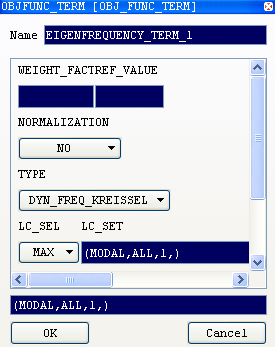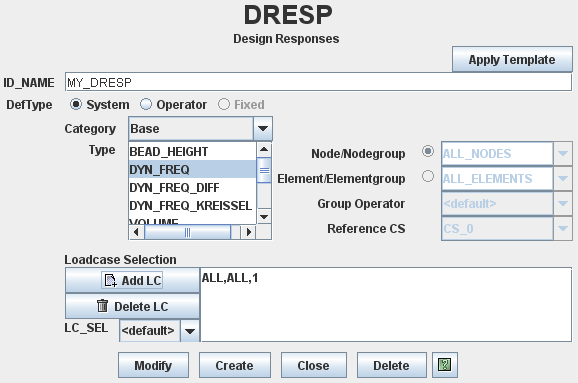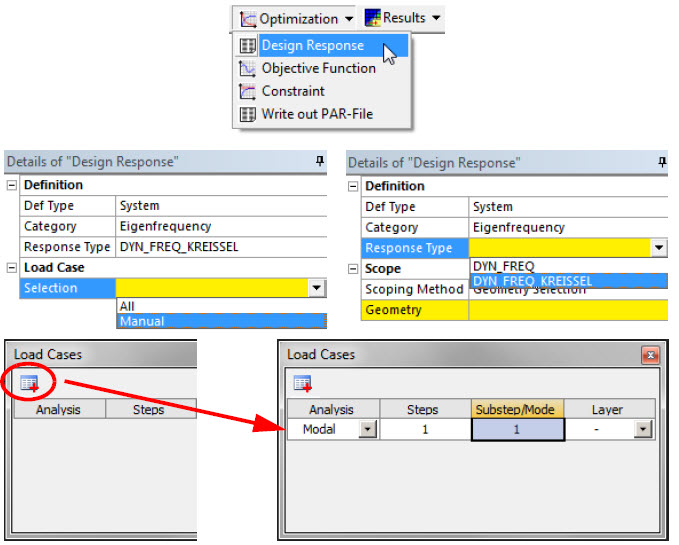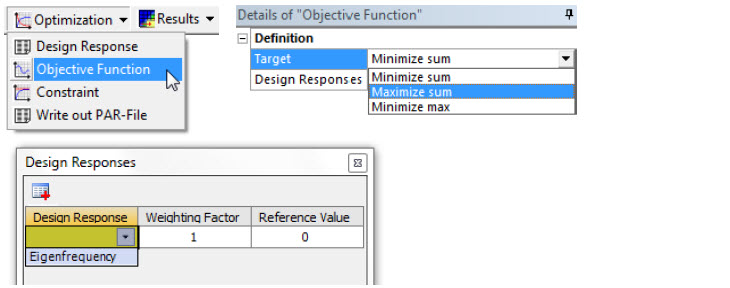Maximizing the Eigenfrequency of a Certain Eigenmode | ||||
|
| |||
Context:
When optimizing a specific eigenfrequency, the order of the eigenfrequencies might change during the optimization iterations. Consequently, the eigenfrequencies might have to be tracked during the optimization iterations. This is done by mode tracking. For more information, see Settings for the General Sensitivity-Based Optimization.
By default the modes are not tracked during the optimization. Mode tracking is activated in OPT_PARAM command:
DRESP ID_NAME = single_lowest_eigenfrequency_1 DEF_TYPE = SYSTEM TYPE = DYN_FREQ LC_SET = MODAL, ALL, 1 END_ OBJ_FUNC ID_NAME = maximize_single_eigenfrequency DRESP = single_lowest__1 TARGET = MAX END_ OPT_PARAM ID_NAME = opt_params OPTIMIZE = maximize_single_eigenfrequency MODETRACKING = ON MODENUMBERS = 8 END_
For this example, at least 8 eigenfrequencies should be requested in the finite element input model defined by the user.
Define the OPT_PARAM Command in Tosca Extension for ANSYS® Workbench
![]()
Define an Objective Function for a Minimization of a Specific Eigenfrequency in Tosca ANSA® environment
![]()
Define a Design Response for a Specific Eigenfrequency in Tosca Structure.gui
![]()




